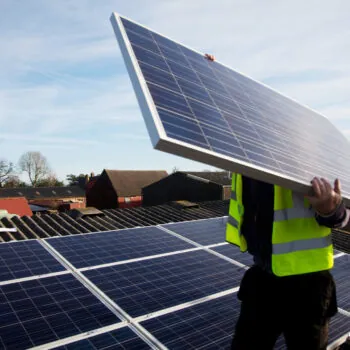Following the release of the post-2020 Multi-Annual Financial Framework (MFF) proposal in early May, the European Commission recently published a series of sectoral legislation detailing how EU money will be spent within each policy heading. These legislative proposals are key for defining how climate and low carbon transition objectives will play out throughout a variety of policy fields.
This briefing sets out policy-specific analysis to show in which sectors the commitment to decarbonising the European economy and society has been effectively translated and where improvements still need to be made in the upcoming negotiations.
It will look more in depth into four proposals and our verdict is summarized below:
European Regional Development Fund & Cohesion Fund
The proposal shows a good overall prioritisation of low carbon transition in regional development, notably by introducing an almost comprehensive fossil fuel exclusion, providing clear support for energy efficiency projects and bringing in climate as a condition for the allocation and disbursement of funds. Some improvements are however still needed on the climate proofing methodology and climate mainstreaming as well as providing more actionable support to a just transition.
Connecting Europe Facility
Some significant progress has been made with the inclusion of 10% dedicated funding for cross-border renewable energy projects and the assessment of investments for their climate resilience as well as cybersecurity investments now being counted as contributing to security of supply. Importantly however, the proposal still falls short of excluding fossil fuel infrastructure from receiving CEF funding. This will fail to send investors the clear signal needed to spur on the low carbon transition as a number of loopholes still allow for significant investments to be directed towards fossil fuel infrastructure. Further than that, it is clear than even though the CEF’s budget doubled, its political priorities remain unchanged and has not been updated to reflect Europe’s commitment to the Paris Agreement.
InvestEU
As things stand, InvestEU is not yet fit to act as a catalyst for investments towards Europe’s low carbon transition. As with the CEF proposal, the legislation does not rule out fossil fuel investments and climate proofing – whilst introduced – remains limited to projects supported in only one of the four investment windows of the fund. The picture is more mixed when it comes to the ringfencing of funds for climate action and the support to energy efficiency projects, which have yet to be clearly prioritised. These changes, if harnessed, hold the potential to driving investments towards key areas for Europe’s transition to a green economy.
Horizon Europe
Only incremental improvements have been suggested on the programme’s climate side, which do not sufficiently harness the potential of EU research and innovation to achieve transformational change for climate change. Horizon Europe’s contribution to climate mainstreaming remains constant and only a small increase in funding for research in climate and energy was achieved. There are however positive signs of a more bottom-up approach to defining an innovation and research agenda with greater civil society involvement. However, a better definition of this process is still required to make programming priorities relevant to societal needs.
Read more about the E3G assessments and benchmarks of each sectoral legislation here.


